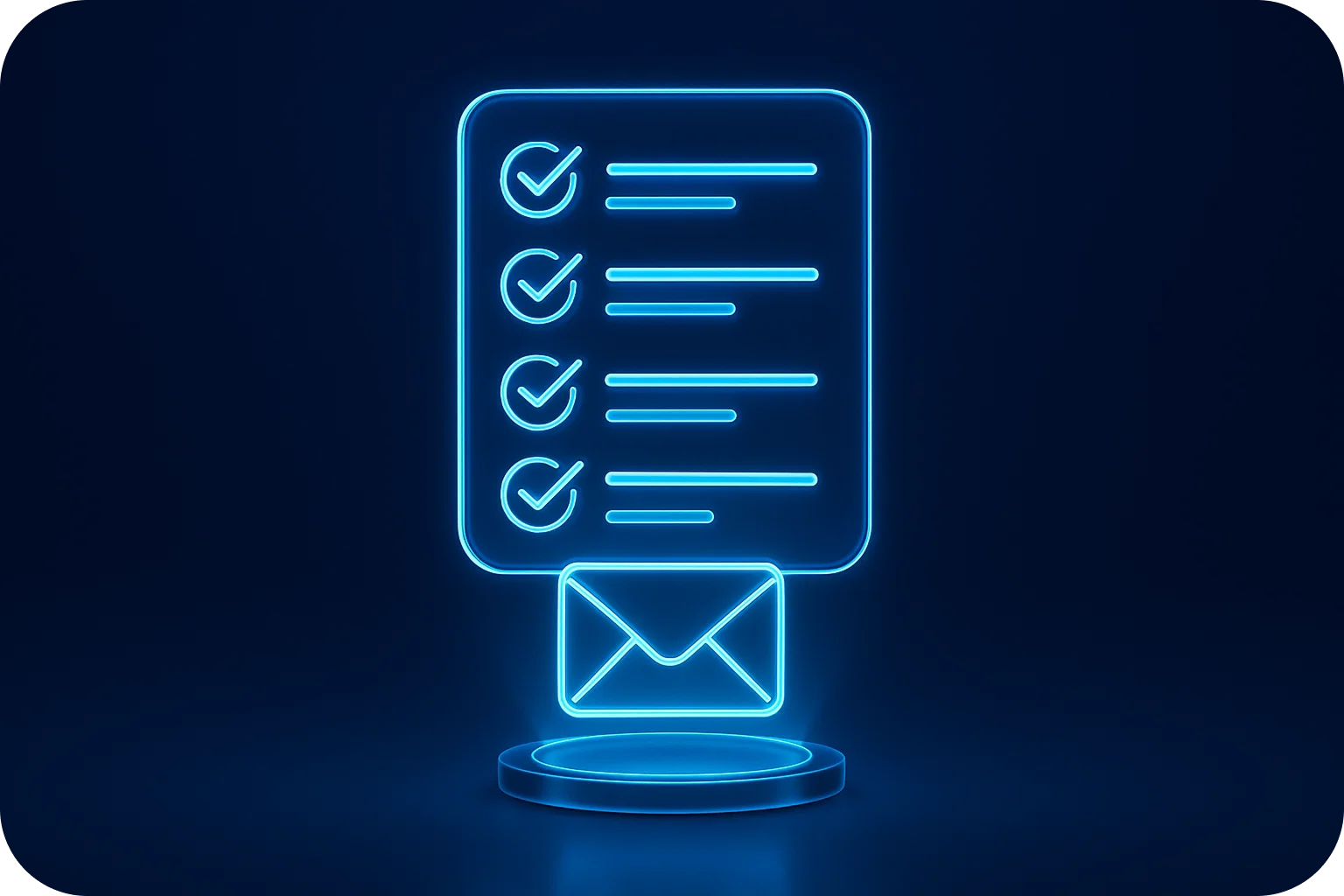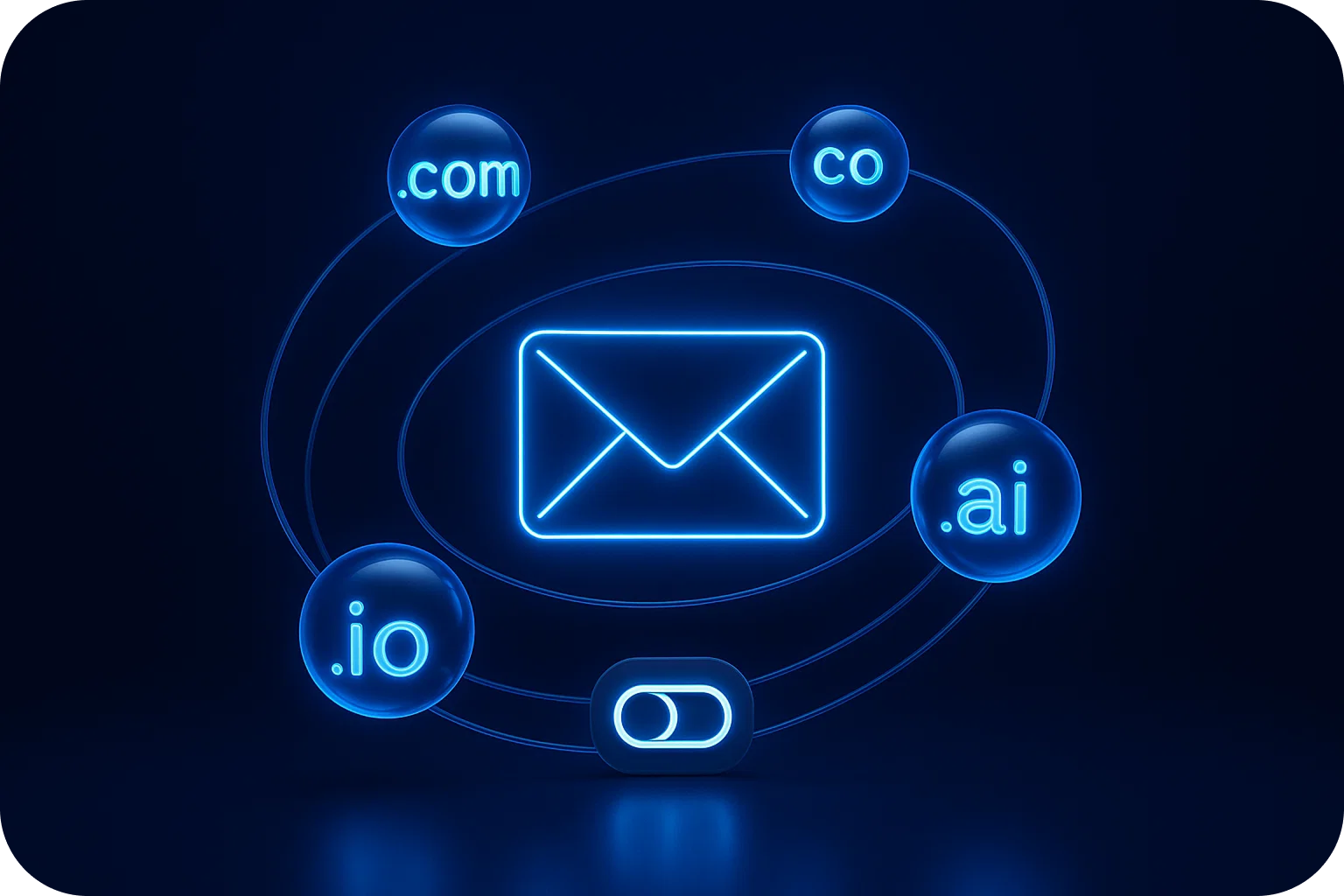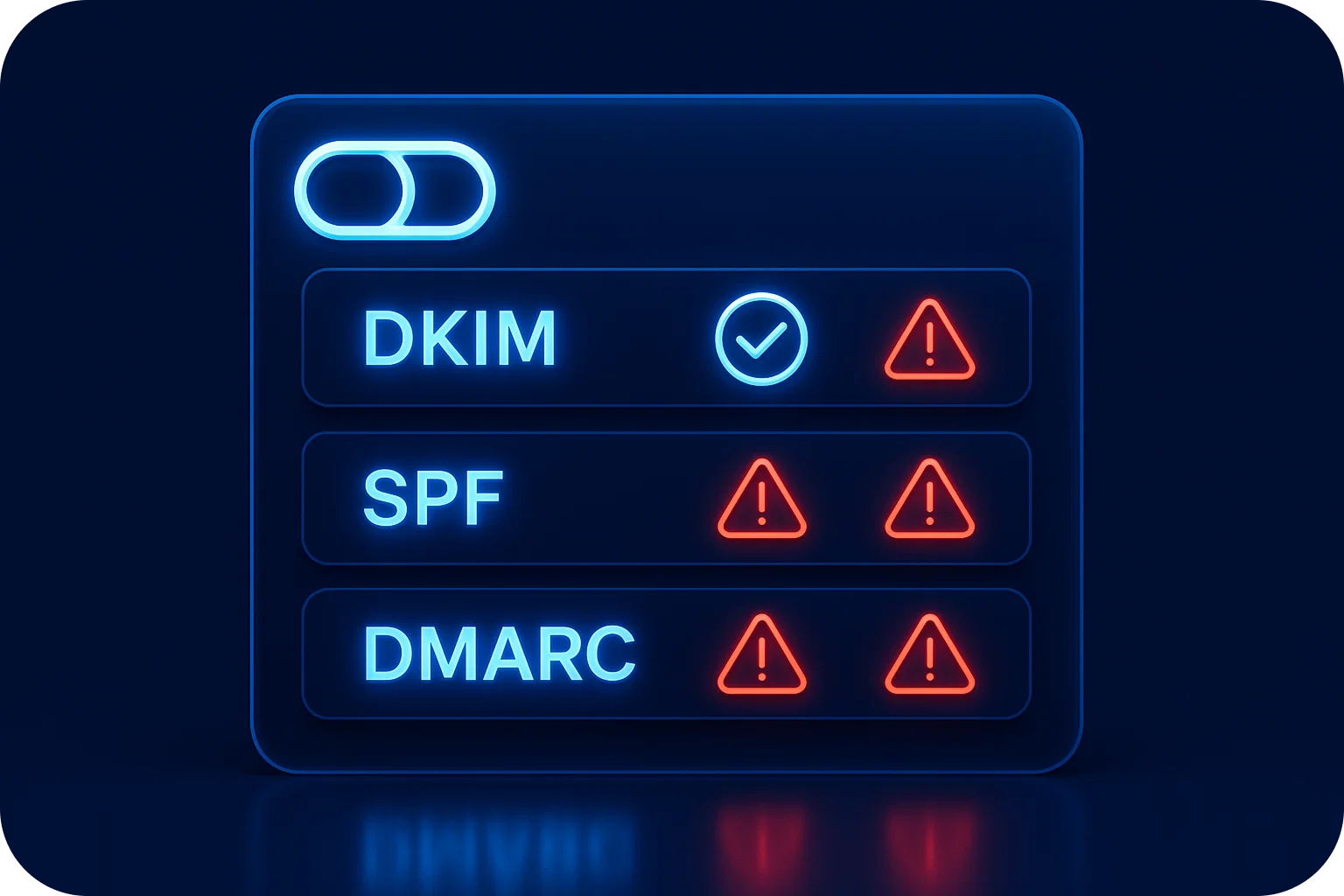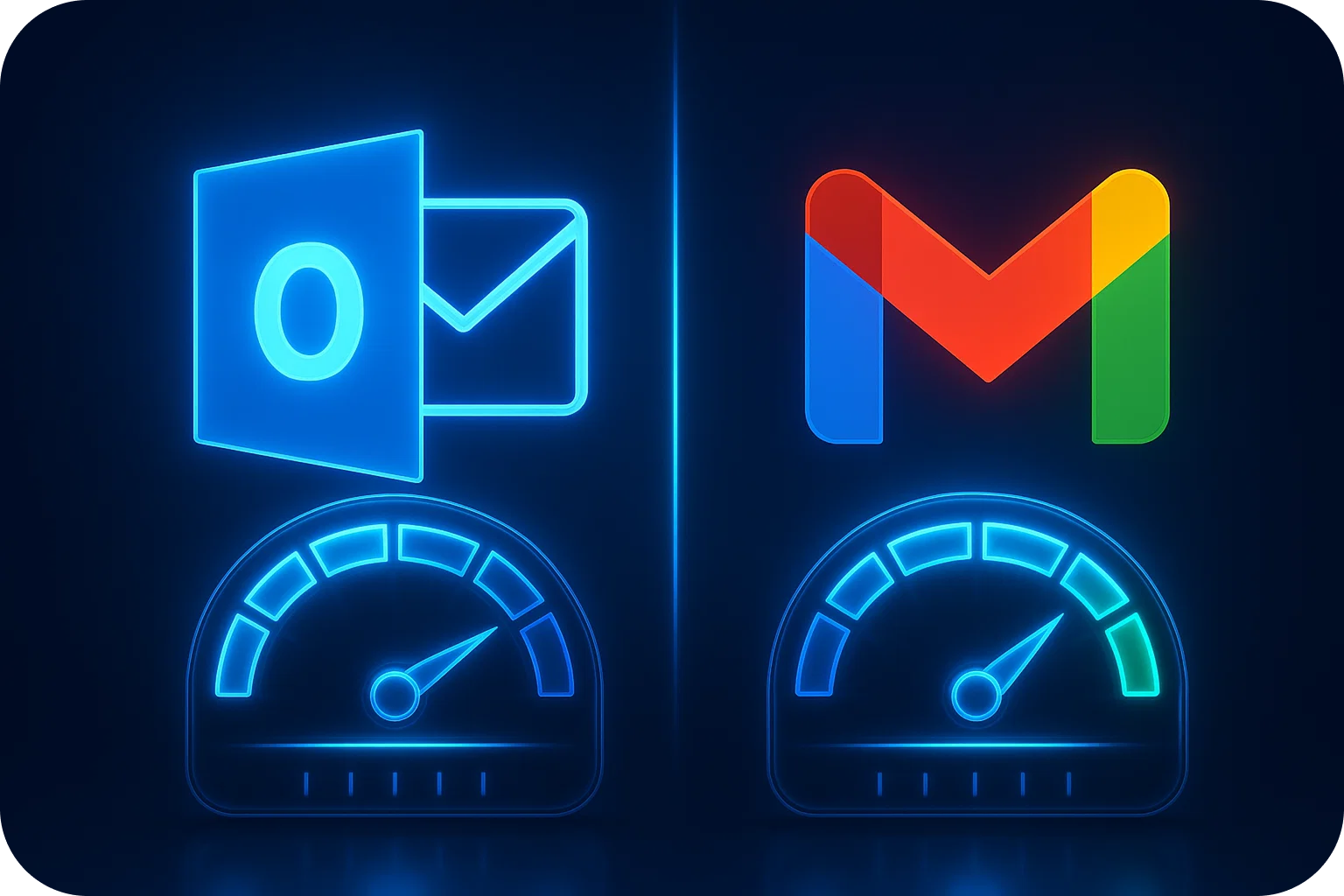Why Enterprise Sales Teams Are Ditching Traditional Email Providers

Enterprise sales teams are facing a harsh reality: traditional email providers like Gmail and Outlook weren't built for cold outreach at scale. While these platforms excel at internal communication and basic email needs, they're fundamentally incompatible with the demands of modern B2B sales operations.
The result? Plummeting deliverability rates, blocked accounts, and millions in lost revenue opportunities. Smart sales leaders are recognizing this limitation and making a strategic shift to specialized cold email infrastructure that's purpose-built for high-volume outreach.
The Traditional Email Provider Problem
Traditional ESPs (Email Service Providers) like Google Workspace and Microsoft 365 were designed for person-to-person communication, not systematic cold outreach. When sales teams attempt to scale their prospecting efforts using these platforms, they run into immediate friction.
The core issue is volume restriction. Traditional providers impose strict sending limits, typically 500 emails per day for Google Workspace and similar constraints for Microsoft 365. For enterprise sales teams managing multiple territories, products, and market segments, these limitations are crippling.
But volume isn't the only problem. Traditional providers use shared IP addresses across millions of users. When one user engages in spammy behavior, it can negatively impact the sender reputation of everyone sharing that infrastructure. Your carefully crafted outreach campaigns suffer because of factors entirely outside your control.
The Deliverability Crisis Hitting Sales Teams
Deliverability has become the single most critical metric for sales success, yet most teams are flying blind. Industry data shows that average inbox placement rates have dropped to 79% across major providers, meaning one in five of your emails never reaches your prospect's inbox.
For enterprise teams sending thousands of emails monthly, this represents catastrophic revenue leakage. If your sales team is sending 50,000 emails per month and only 79% reach the inbox, that's 10,500 potential conversations that never happen. At an average deal size of $50,000 and a 2% conversion rate, you're potentially losing $10.5 million in pipeline annually.
Traditional email providers offer virtually no deliverability management tools. There's no warm-up functionality, no reputation monitoring, no dedicated IP options, and no infrastructure designed to maintain sender reputation at scale. Sales teams are essentially operating without instruments in increasingly turbulent skies.
Why Cold Outreach Demands Specialized Infrastructure
Cold email outreach operates under fundamentally different technical requirements than standard business communication. Understanding these differences is crucial to building a scalable sales engine.
Domain and IP Reputation Management: Every email you send affects your domain's reputation with major inbox providers. Traditional ESPs provide no visibility into this reputation and no tools to protect it. Specialized cold email infrastructure includes automated reputation monitoring, gradual volume ramping, and isolation strategies that protect your core business domains.
Technical Authentication: Proper SPF, DKIM, and DMARC configuration is non-negotiable for deliverability, yet traditional providers offer minimal guidance and limited customization. Enterprise-grade cold email platforms handle these technical configurations automatically, ensuring every message is properly authenticated.
Volume Distribution: Sending 10,000 emails from a single inbox triggers every spam filter in existence. Sophisticated sales operations distribute volume across multiple inboxes and domains, maintaining natural sending patterns that inbox providers trust. This level of orchestration is impossible with traditional ESPs.
Warm-up and Conditioning: New email accounts need 3-4 weeks of gradual volume increases and engagement signals before they're ready for cold outreach. Traditional providers offer no warm-up functionality, leaving sales teams to manually manage this critical process or skip it entirely, guaranteeing deliverability problems.
The Real Cost of Poor Email Infrastructure
When enterprise sales teams rely on inadequate email infrastructure, the costs compound quickly across multiple dimensions.
Lost Revenue Opportunity: Every email that lands in spam instead of the inbox represents a lost conversation. For a mid-sized sales team sending 100,000 emails monthly, improving deliverability from 79% to 98% means an additional 19,000 emails reaching decision-makers. At conservative conversion rates, this translates to millions in additional pipeline.
Sales Team Productivity: Sales reps spend an average of 21% of their day writing emails. When those emails don't reach their destination, that time is completely wasted. Poor infrastructure doesn't just reduce results; it demoralizes your highest-performing team members who watch their efforts disappear into spam folders.
Brand Reputation Risk: Using your primary business domain for cold outreach puts your entire company's email reputation at risk. One aggressive campaign or spam complaint can damage deliverability for every department, from customer success to finance to executive communications.
Compliance and Legal Exposure: Traditional ESPs provide minimal tools for managing unsubscribes, bounce handling, and compliance requirements. As regulations like GDPR and CCPA impose stricter requirements, sales teams using inadequate infrastructure face increasing legal risk.
What Enterprise Teams Are Moving Toward
Forward-thinking sales organizations are adopting specialized cold email infrastructure that addresses these challenges systematically. This new generation of platforms offers capabilities that traditional ESPs simply cannot match.
Dedicated Deliverability Management: Modern platforms maintain 96-98% inbox placement rates through automated warm-up sequences, reputation monitoring, and intelligent sending patterns. This isn't aspirational, it's the baseline expectation.
Unlimited Scaling Capability: Rather than being constrained by arbitrary sending limits, enterprise teams can scale to 100x their current volume by distributing sends across multiple inboxes and domains. A typical configuration uses 3-5 inboxes per domain, with each inbox sending 20 emails daily, enabling massive scale while maintaining natural sending patterns.
Multiple Provider Options: Sophisticated infrastructure supports Google Workspace, Microsoft 365, and shared IP configurations, allowing teams to optimize for deliverability, cost, and specific use cases. Dedicated IP options provide maximum control for the highest-volume senders.
10-Minute Implementation: Unlike traditional ESPs that require extensive manual configuration, modern cold email platforms automate inbox creation, DNS configuration, authentication setup, and integration with outreach tools. Sales teams can be fully operational in minutes rather than weeks.
Enterprise-Grade Security: Compliance with GDPR, CCPA, and SOC2 standards is built in, not bolted on. This includes proper data handling, audit trails, and the security controls that enterprise buyers demand.
The Strategic Advantage of Purpose-Built Infrastructure
The shift from traditional email providers to specialized cold email infrastructure isn't just about solving technical problems; it's about gaining a strategic advantage.
Sales teams using purpose-built infrastructure can test more hypotheses, reach more segments, and iterate faster than competitors constrained by traditional platforms. When you can confidently send 50,000 emails monthly with 98% deliverability, you can afford to experiment with messaging, test new markets, and refine your ideal customer profile in ways that simply aren't possible at lower volumes or deliverability rates.
This infrastructure advantage compounds over time. While competitors struggle with blocked accounts and declining response rates, teams with proper infrastructure build increasingly sophisticated outreach operations. They develop data-driven insights about what messaging resonates, which segments convert, and how to optimize every element of their sales motion.
Integration with Modern Sales Technology
Cold email infrastructure doesn't operate in isolation; it's the foundation of a modern sales technology stack. Leading platforms integrate seamlessly with outreach tools like Instantly, Lemlist, Smartlead, Reply, and SalesHandy, as well as emerging AI SDR agents from providers like Luna and 11x.
This integration capability means sales teams can leverage automation and AI while maintaining the deliverability and scale that drives results. The infrastructure handles the technical complexity of authentication, reputation management, and volume distribution, while outreach tools and AI agents focus on personalization, timing, and conversion optimization.
Making the Transition
For enterprise sales leaders evaluating this shift, the transition process is straightforward but requires strategic thinking.
Start by calculating your current deliverability rate and the revenue impact of improvement. Most teams are shocked to discover how much pipeline they're losing to poor infrastructure. This analysis builds the business case and urgency for change.
Next, audit your current email architecture. How many domains are you using? What's your sending volume per inbox? Are you putting your primary business domain at risk? Understanding your current state helps you design the right future state.
When implementing new infrastructure, plan for a 3-4 week warm-up period before reaching full sending volume. This gradual ramp is essential for building sender reputation and achieving optimal deliverability. Teams that skip this step inevitably face deliverability problems.
Finally, establish clear metrics and monitoring. Track inbox placement rates, response rates, and conversion metrics across different domains, inboxes, and campaigns. This data-driven approach allows continuous optimization and proves ROI to stakeholders.
The Bottom Line
Traditional email providers served their purpose for basic business communication, but they're fundamentally incompatible with the demands of modern B2B sales. Enterprise teams that continue relying on these platforms are accepting artificial constraints on their growth potential.
The sales organizations winning in today's market have recognized that email infrastructure is strategic infrastructure. They've made the shift to purpose-built platforms that deliver 98% inbox placement, enable 100x scaling, and provide the foundation for sophisticated, data-driven sales operations.
The question isn't whether to make this transition; it's how quickly you can execute it before competitors gain an insurmountable advantage. Every day you operate on inadequate infrastructure is another day of lost conversations, wasted sales effort, and unrealized revenue potential.
The tools exist. The playbooks are proven. The only question is whether your sales organization will lead this transition or be forced to follow.
More articles
Get started now




%201.png)





